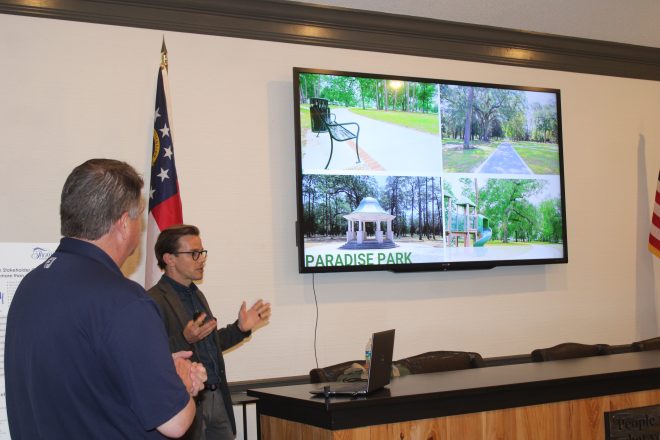Chinch bugs have made an early return
Published 7:36 pm Saturday, July 9, 2016

- Chinch bugs
Chinch bugs are back, and they are early. They are primarily a pest of St. Augustine lawns. Chinch bugs have a piecing/sucking mouthpart which allows them to feed into the base of a turf blade. Their damage mimics dried areas of the lawn which does not follow a normal pattern.
They are a hot and dry weather pest only! Our last run with chinch bugs was in late summer of 2014 as weather turned dry. We had a few cases last year as well. With the change from El Nino to La Nina, our region of the U.S. typically experiences drier weather. This may be why we are seeing chinch bugs this soon.
Adult chinch bugs are very small. Adults would easily fit inside your pinky finger nail. Adults are one-eighth to one-tenth inch long – about the size of a large ant. Young chinch bugs are red to pink with a white band across their back. As they age, chinch bugs turn gray to black with a white band or patch on their back.
It is not difficult to determine if chinch bugs are the culprit to a lawn problem. First, dead areas of the lawn appear quickly. Chinch bug damage occurs fast.
To confirm chinch bugs, search the edges of a dead patch. Pull back the turf and thatch where you can see the soil surface. You can also look inside the leaf sheaths where the grass blades come together at the base of the plant.
Another method to identify chinch bugs is to use a coffee can. Cut out both ends of the can, and sink one end into the ground several inches in the green grass. Fill the can with water, and keep the water level up for five minutes. Watch the top of the water for floating chinch bugs. Whatever method you use, check several areas if you do not see them at first.
For chinch bug remediation, first, use cultural practices. Heavily fertilized St. Augustine lawns are more susceptible to chinch bugs. Use slow-release fertilizers in the summer, and reduce fertilizer rates by half. Because stronger roots help resist insect attack, mow St. Augustine grass three inches tall and often enough so that you do not remove more than one-third of the leaf blade at any one time. Sharp mowing blades give a clean cut and reduce stress on the grass and make the lawn more resistant to chinch bug injury.
Chinch bugs begin their attack in hot, dry areas and live in the thatch layer of the lawn. Over watering fertilization increase the amount of thatch. Wait until turf wilts slightly to water. Irrigate three-quarters to one inch of water at one time. Place a rain gage in the lawn to determine how much water you apply. If the thatch layer is thicker than one inch on St. Augustine lawns, it is probably too thick. De-thatching is generally recommended and performed in the summer months.
Chinch bugs are one of the few lawn pests that require insecticide treatment. Chinch bugs can quickly destroy a St. Augustine lawn. You will need one or more insecticide treatments two to three weeks apart to reduce the problem. Read and follow all label directions when using pesticides. No insecticide does a good job of killing insect eggs. You are likely to need more than one application for serious chinch bug problems. Use different products for repeat treatments to reduce the chance of resistance. Many different insecticide chemical classes are effective in controlling chinch bugs.
In terms of treating chinch bugs, UGA Extension Turf Entomologist Dr. Will Hudson says we must use 2 gallons of water per 1000ft2. If the insecticide remains on the leaves, it will not reach the chinch bugs at the soil surface. You can irrigate 1/10 inch behind the insecticide application, but it must be done fast. Once the insecticide dries on the leaf surface, it is difficult for it to move to the soil.
UGA has many varieties of recommended St. Augustine grass. Some have tolerance to chinch bugs. No variety has a ‘full package.’ A variety that is susceptible to disease may not be susceptible to chinch bugs, and vice versa. Dr. Hudson says chinch bugs have always overcome tolerance of varieties which were tested and proven to display tolerance to chinch bugs.
In summary, chinch bugs also become significant based on environmental situations. They are a dry weather pest. During cool, moist periods, chinch bugs are susceptible to infections from naturally occurring fungi. For that reason, watering regularly during the time that chinch bugs are active will help fight them.
For more information, contact Thomas County Extension office at 225-4130.





